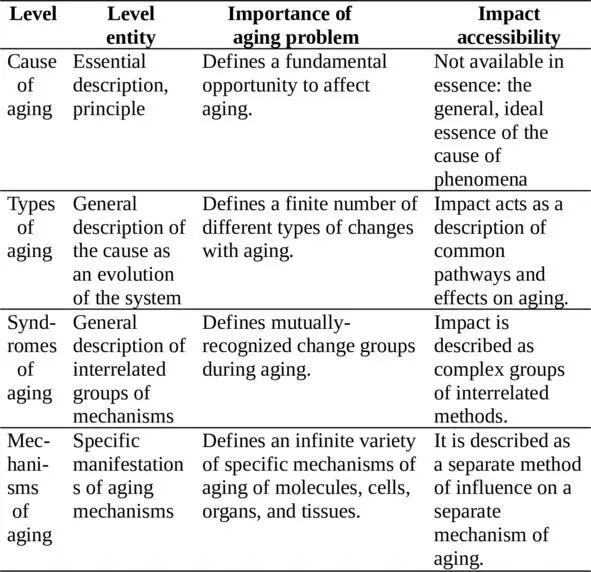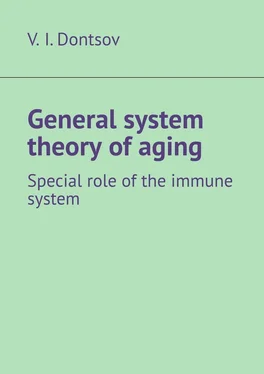Regarding the general methodology for the consideration of the issue, it should be said that it was known in ancient times – Platon developed it in the most complete form. The leading contemporary philosopher-methodologist A.F. Losev formulates the most important provisions for us as follows: “Current experience gives us an idea only of flowing and scattered bodies and events, in which neither beginning nor end is seen and whose meaning remains vague due to its fluidity, very often incomprehensible and blind… And since the scientific understanding of a thing requires the final disclosure of its meaning, then the theory of ideas arises as ultimately developed communities.”. A full-fledged scientific analysis is characterized as follows: “To understand and correct components is necessary through the whole… The idea is the ultimate community, has a structure and is meaningfully filled, respectively has it’s own specific (own) … already purely ideal objectivity and reality… this limiting community manifests itself in its particular, in a semantic way, never moving beyond its limits… The essence (of something) is interpreted as a principle of structure…”.
Thus, it is clear that the essence, the cause of aging can be expressed only in the language of high-level abstraction as an objective pattern of life, being, as a principle, but not at all as a process, much less as a specific special mechanism in the body. The reduction of principles to mechanisms is the main methodological error in the natural sciences, including in gerontology. It is quite clear that when defining the term “aging”, the definition of the principle of aging as a phenomenon turns out to be necessary and sufficient, which has been known and understood for a long time: aging is a decrease in viability with age, or an increase in the probability of death with time, or, more, in general terms, it can be said that aging is an increase in the degree of chaos at all structural levels of the organism, which is manifested by a general decrease in the body’s resistance to all factors and is recorded as an increase in the probability of death from all causes of aging.
The definition reveals the very essence of the phenomenon of aging, which acts as a global, fundamental cause of aging because the cause of the accumulation of chaos (entropy) in closed systems has long been known: it is a law of nature, known in particular as the second law of thermo-dynamics. Now the interpretation of this law has significantly expanded and deepened in connection with its extension to information processes.
In biology and mathematics, the most interesting are modern trends: theories of self-organization, theories of open systems, describing the generation of information, its relationship with chaos, the role of energy in this process, etc.
The applicability of the second law of thermodynamics to living systems is related to the fact that they are only partially open systems: in any modern complex organism, there are structures that are not updated inside the organism – cells, molecules, organelles, organs, etc. Thus, the fundamental reason for the aging of any complex systems is the discreteness of the forms of existence of modern organisms on Earth – separation from the external environment, which puts a limit on the capacity for the internal evolution of an organism while preserving its quality as a separate system. In general, this is known as the inevitability of the accumulation of chaos in any partially open system limited from the external environment with time.
The self-renewability of a living system within itself is not a sufficient factor in counteracting aging in general, since it is possible to counteract the second law of thermodynamics only due to external influences on the system and these influences essentially lead to evolution, and not to stabilize any system.
The most important approach to the analysis in a systemic examination is to take into account the hierarchy of the structures of real complex systems. At the same time, system analysis requires consideration of principles characteristic of each hierarchical level.
Such a hierarchy of consideration in system analysis reflects not the material structure of the object that morphological sciences study, but a hierarchy of essential principles reflecting the laws of functioning and communication within and between the structural levels of the object being considered, which acts as a complex hierarchical dynamic system.
The following table gives an idea of the hierarchy of aging in terms of a systematic approach ( Table 1 ).

Table 1. The hierarchy of consideration of aging in terms of a systematic approach
Three hierarchical levels of aging description are fundamentally ideal and are available only for theoretical analysis.
The last level is structural and its study is possible only when it is filled with biological content. With this consideration, it can be seen that the primary cause, as a principle, is manifested by several of the most common patterns – the types of aging inherent in all living systems. These types, in turn, form a number of interrelated groups of symptoms – aging syndromes, which already include specific manifestations of aging at the level of specific mechanisms that implement aging depending on specific conditions.
The systematic consideration of aging is also manifested in the fact that in each specific manifestation, the mechanism of aging, you can see all four levels mentioned above: a reflection of the ideal cause in specific conditions; relation to a greater extent to a certain type of aging; regular relationship at the level of mechanisms with other symptoms ( syndromes ); and, finally, the actual concrete actual manifestation of aging for the phenomenon under study in a specific case for a specific structure. Naturally, the more specific and narrow the phenomenon we study, the more specific, but more narrowly, the cause of aging manifests itself.
For the whole organism, aging as a whole can be sufficiently fully characterized only with the use of all four hierarchical levels of its presentation. An important and traditional is the structural consideration of the body or its individual elements.
Here again, the system approach allows revealing the moments obscured by usual consideration.
The dynamic view of the phenomenon under consideration indicates that living systems exist only as a stream, where continuity is preserved, but not always the entire real material structure. Processes in a living system occur at different time levels. So, at the metabolic level, these are (micro) seconds of biochemical reactions during which specific molecules exist; for cells, these are hours and days during which they are divided (cell cycle); for the whole organism, these are years, decades and even centuries.
Each level can have representation at a higher level with some of its structural elements (non-updated genes – at the cell level, non-dividing cells – at the suborgan level, etc.), then these lower-level elements become important for higher-level aging.
Each level is updated at the expense of a higher level, which reduces the absolute significance of the lowest level for aging higher (for example, cell growth and division sharply reduce the importance of aging or damage at the molecular level).
Each level is qualitatively different in structure and principles of organization and functioning.
All levels constitute a single whole, its change, in the final analysis, is only important as the aging of the organism is the aging of the whole.
Читать дальше













